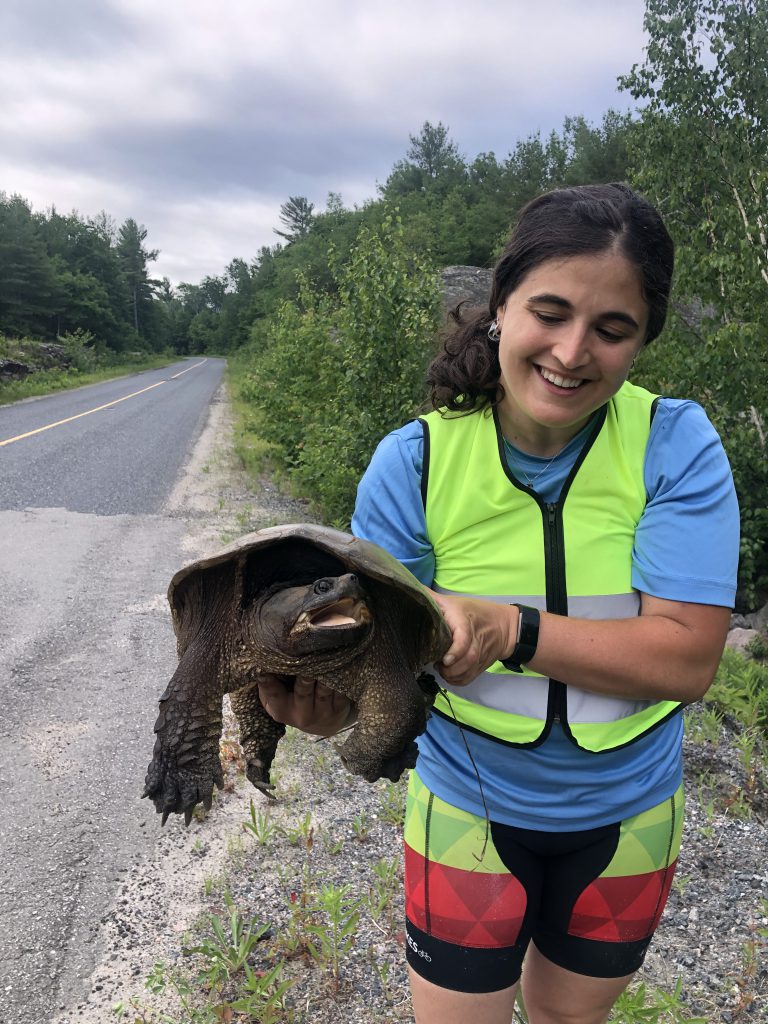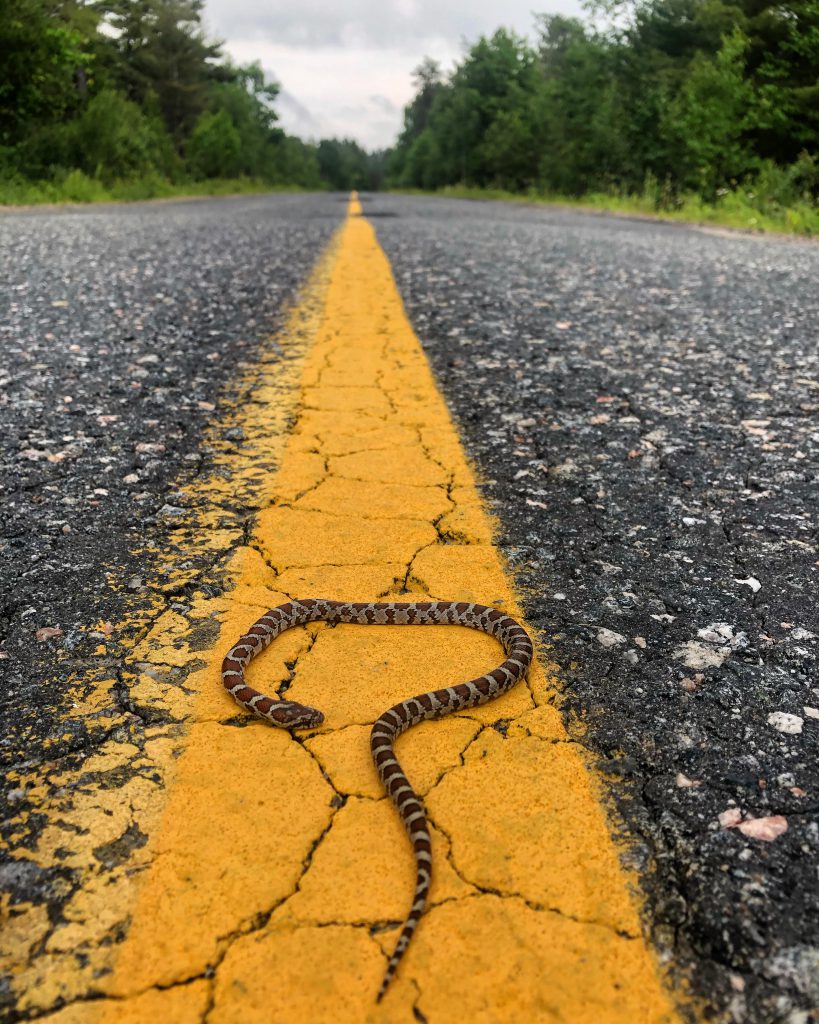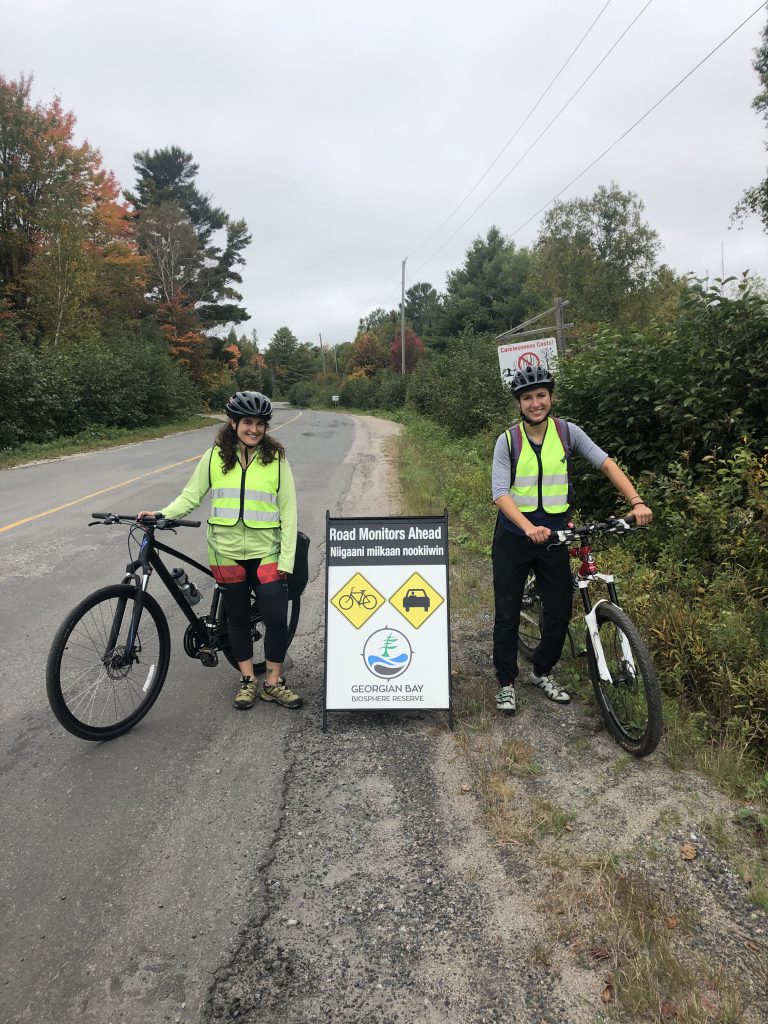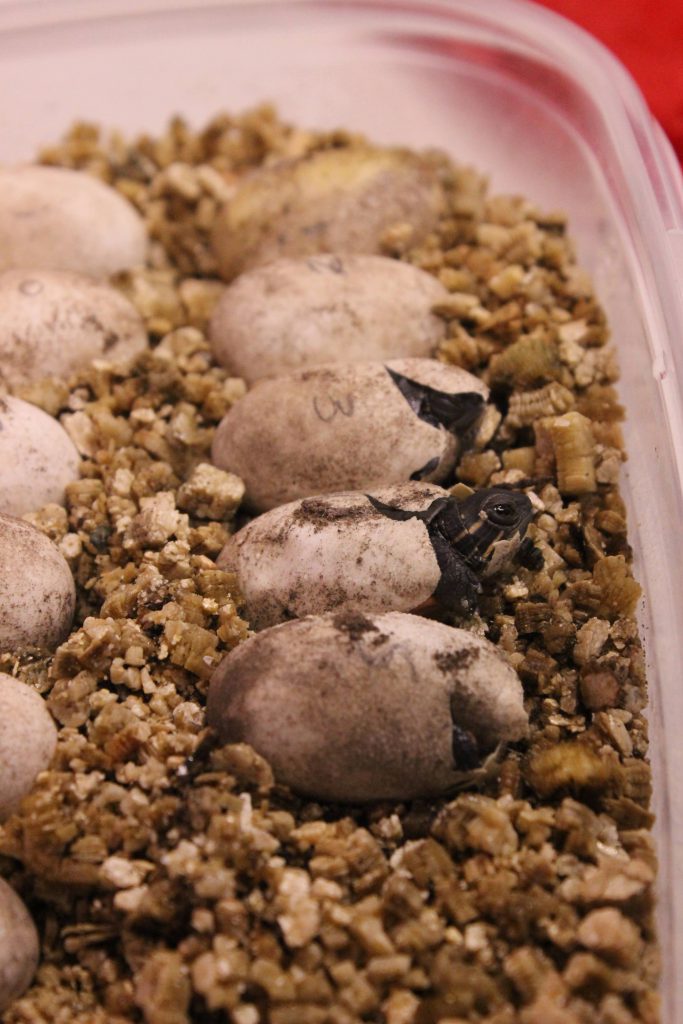Road Ecology
Many roads within the Georgian Bay Biosphere pass through forests, rock barrens, and alongside wetlands. These habitats are home to sensitive species and species at risk. While these roads are wonderful for making the “scenic route” the default, they have negative effects on wildlife and the habitat that they intersect.
Reptiles are especially threatened by the impacts of roads, directly and indirectly, due to the behaviours, habitat preferences, and life histories of these animals. Turtles often use roadsides as nesting habitat, increasing the chances of female turtles being hit. As a result, populations alongside roads in some areas have been found to be primarily male-based. Many studies that have modeled turtle populations around roadways have found that even small, but ongoing, mortality of turtles on roads could result in steady population declines, due to their life history of delayed maturity (some take up to 20 years before they can reproduce).
Snakes use roads for other reasons as well, including to bask on the roadway for thermoregulation. While some snakes attempt to cross roads in order to access habitat, others may avoid the roadways, preventing their access to key habitat and reducing or altering population genetics of the area. Some snake species that immobilize when threatened are particularly vulnerable on roads because they may immobilize at the approach of a vehicle.
Other effects, such as the genetic isolation of populations, are also evident through literature.
Locations along roadways where numerous reptiles are found to be crossing live or observed killed on the roadway are called a “hotspot”. It is in these locations where mitigation efforts are best focused to reduce reptile mortality. The project aims to identify “hotspots” on the roads—areas where reptile mortality and crossings are highest. These high-risk areas can then be modified to reduce reptile mortality.
As we explore in the Biosphere, remember that you can adapt your driving behaviours to help keep reptiles safe. Please be a cautious and attentive driver at all times of the day. Do your best to keep your eyes on the road ahead and maintain a safe speed that will allow you enough time to stop when you see an animal on the road. And don’t forget to say hi if you see a road survey crew biking along and stopping to record observations!
2020 Mortality Surveys
During the 2020 year, this project focused on three roadways that were observed to have high road mortality rates and/or had the ability to partner with local municipalities to use the data to make recommendations regarding future road construction.
A joint partnership on Skerryvore Road, among the Georgian Bay Biosphere, Shawanaga First Nation, and Laurentian University will investigate a new mitigation method for keeping reptile populations safe near roads and reduce their attraction to the road for nesting. Later, these methods can be applied as best management practices for future road construction or repair in the future.



